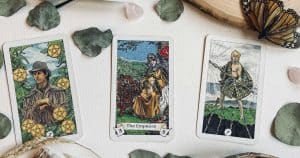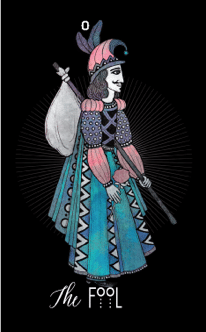
Throughout history there has been a small percentage of every population that seeks the type of enlightenment that can only come through isolation. Being out of the mainstream and away from the general population has been a constant of every human culture in recorded history. The word “monk” has its roots in “mono” meaning one. A monastic lifestyle is something that is done alone. And true isolation from others is not for everyone. If you thrive in the limelight or among the crowd, enjoy partnering up with friends, are seeking a lover with whom to share your life, or want a family … well, the monastic life is not for you. It can be an option, though, in which to find peace temporarily. If you are an introvert by nature, can find stimulation from within and want to attain spiritual peace of mind, the monastic path may be the one experience you find most rewarding in your life.
Enlightenment
The goal of all spiritual development is to become enlightened to the workings of the universe beyond the ways that our five senses can receive and interpret. We can pursue this aim in many ways: be of service to others, lead the less fortunate down the trail we have already followed or bear witness to our spiritual awakening. All of these have advantages and weaknesses for achieving the goal of spiritual enlightenment and maintaining the accrued wisdom from having arrived at the peak of the mountain of metaphysical insight. The monastic path is an alternative method for achieving this same point of exaltation. It is no better or worse, but it does have a remarkable track record. In removing one’s self from the mainstream and limiting contact with as many people as possible, the chance to truly ponder the universe in uninterrupted peace is yours. The possibility of meditating until you are one with the universe may sound like a myth in our busy western world, but it is the foundation of many ancient cultures that survive into the present day.
Is the Monastic Path the Path of Avoidance?
There is an ancient Taoist tale of two young men at the foot of the mountain. At its top was the monastery, the training place for future monks. The first boy mocks the idea of devoting one’s life to solitude, “I shall want to confront the meaning of life head on, not in isolation,” he proclaims boldly, insisting that to go up the mountain would be to run away from life’s problems. The other boy begins walking up the mountain’s path, turning only to reply to his friend, “I too want to confront the meaning of life head on, and actually will do so in isolation.” This simple paradox goes to the heart of the matter: while the monastic path might seem to be avoidant, it is the clutter of everyday life and entangled relationships that block us from seeing the world beyond this one. Your immersion in this life is actually your surrender to the physical and cerebral realms. You may achieve personal gain and intellectual satisfaction, but until you can satiate your spiritual hunger, the sensate world will only serve as your path of avoidance. Meanwhile, ridding yourself of all the unessential facets of life can clear the way for you to achieve a feeling of peace with yourself and harmony with the universe that others can barely dream about.
Cloister
When nuns make their vow to God to be obedient and chaste, they enter a convent. This is a small isolated community devoted to prayer and acts of charity. Buddhist nuns and monks have a similar structured network of communities. In medieval times, within some convents, there was a section called the cloisters. The word “cloister” comes from the Latin word “claustrum” referring to tight and confined spaces. If you suffer from claustrophobia, life in a cloister may be troubling. Cloistered nuns took a vow of silence in addition to their other oaths. In never speaking, the goal is to always be in a mode of receiving rather than reacting. The extreme vows of nuns, priests, monks and other religious personnel function as a surrender of the powers of individuality which society grants us; the surrender must take place in order for the deepest truths of the universe to take hold within our beings.
Is It Right for You?
If you are currently single, loneliness and feelings of inadequacy may be holding you back from a lot of things in life, but they could be a chance for you to try the monastic path. Without having a partner or family to need and be needed by, you can concentrate on what is in the world outside of your own sphere of control and consciousness. But the sphere around you has to be cleaned out. The monastic path is not one of gadgets and social networking; it is of isolating one’s self in order to find peace. In this isolation, many cultures have disciplines to keep one’s mind sharp yet obedient. Some Buddhist sects proscribe complex prayer bead recitations. Hindu ascetics forego even clothes and live in caves, starving save for gifts of simple fruit delivered to them by the faithful. Isolated holy men and women over the centuries could be heard chanting from their lone courtyards. You must find a discipline, be it meditation, prayer or a structured ritual that reinforces the foundation of your beliefs about the insight you intend to receive from the universe.
Monastic Professions
There are ways to achieve happiness with your place in the world by adopting the practices of the monastic path without having to make the radical commitment it requires. Many creative professions require some isolation to achieve greatness. Whether it be the lone artist staring at a blank canvas in her studio or a writer up past midnight sitting at his computer with the word processor page lighting the screen, much of what satisfies our spiritual hunger comes from creating unique statements that reflect the condition of who we are. Having a sacred space allows us to create our own statements, be they written, musical, visual or involving other structures and media. Isolating ourselves to listen to the universe can be a healthy spiritual exercise, even if we enter into the discipline intending to climb back down from the mountaintop at the end of the afternoon.











